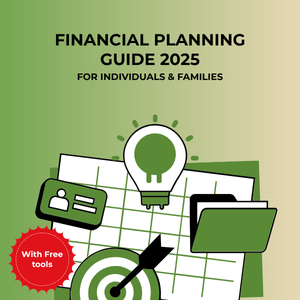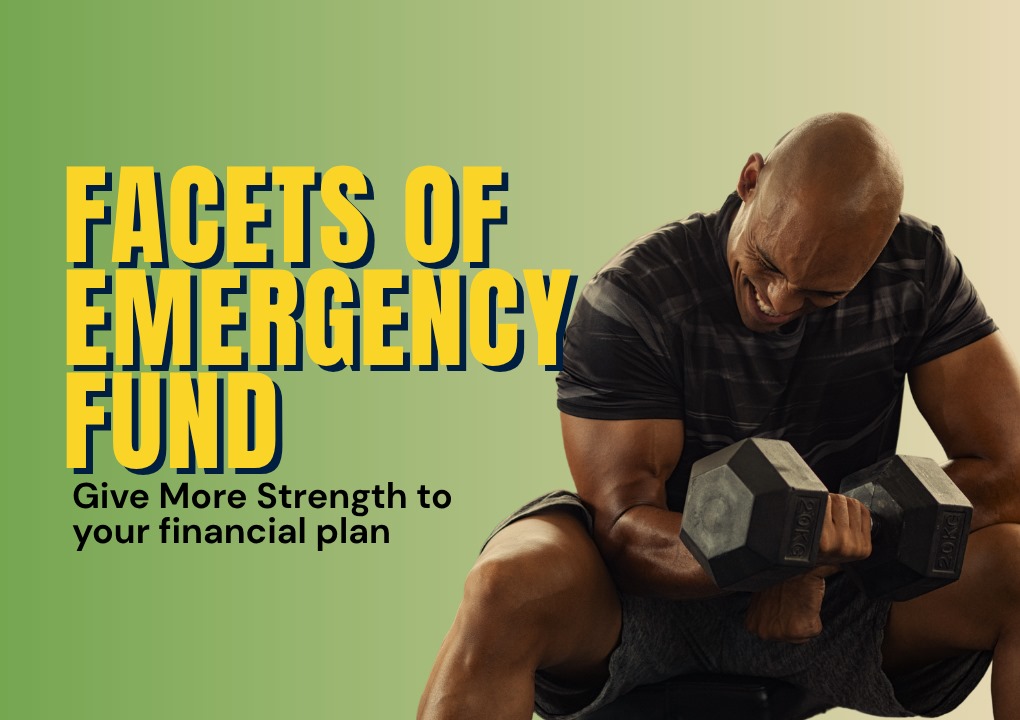Financial Planning Guide 2025
Chapter 3

Q1. How to use Debt to build wealth?
Personal Finance debt, such as taking a loan, can be a valuable tool for building your wealth. Loans can offer you many benefits, for example, a home and a car. Loans help you achieve the financial goal of buying a house or a vehicle (by making payments over time) without having to wait and save enough to make an outright purchase.
However, loans are often misconstrued as an instrument for the non-wealthy, when in fact this is not the case. Wealthy investors often use loans to enrich themselves further.
Loans will allow you to incur the expenditure (for example, buy the house or the car) that you wish to incur, when you want to incur it, and repay the amount at a time every month, over a specified tenure.
Different kinds of loans are available, and how to ensure you don’t overborrow?
Unsecured loan: An unsecured loan refers to any loan that is not secured by a lien on any of your Specific assets. This means that in case you default on the loan due to bankruptcy or any other reason, the unsecured debt lender does not have the right to claim any specific asset. An example of this is credit card debt or a personal loan from a friend or relative.
Secured loan: A secured loan is one where you, the borrower, pledge some asset of yours as collateral to the loan. This means that in case of bankruptcy or any other reason for defaulting on the loan, the lender of your secured debt has the right to take possession of the asset (known as repossession) and sell it to recover some of their loss. An example of this is your car loan and home loan.
There is a simple way to check whether you are over-leveraged or not.
It is the Debt-to-Income Ratio, which has also been mentioned in our earlier chapter on Measuring Your Financial Health.
As discussed, this ratio is simply the sum of your monthly outgoings (EMIs) on your liabilities, divided by your total fixed monthly income. It should not exceed 0.3 (or 30%); otherwise, you may be putting a strain on your income to service your debt.
What to do when you find yourself in too much debt?
When one is overleveraged with the wrong type of loan, such as a credit card, it not only negatively impacts one’s credit score (CIBIL score) but also reduces one’s chances of success in their financial plan. Too much of unwanted EMIs would impact your income sustainability, which would, in turn, erode your savings potential towards various financial goals.
Three things to keep in mind to avoid getting overburdened by EMIs, or actions you can take to reduce the burden when one is stuck in a nasty situation like that.
Take Stock of Your Liabilities
Maintain a Personal Budget. This underrated and straightforward tool is an excellent resource in your battle against debt, and maintaining a reasonable personal budget can bring debt success practically within reach.
A personal budget will help you know the following:
- Your exact cash flows, i.e., your fixed monthly incomes and all your monthly expenses. Once you know your costs, you can see where you are spending on luxuries and rationalize this portion. Spend on the necessities only, save the rest. Calculate an approximate figure of how much extra money you can save each month, and allocate it towards a debt repayment fund. Use these funds to pay off your debt gradually. You can reward your family and yourself once the debt has been cleared.
- Your exact liabilities-You can track exactly what debts you have and all their details – after all, knowing your enemy is half the battle won!
Restructure your loans
One can restructure your loans in two different ways:
- First, restructure to take advantage of a lower interest rate; speak to each of your lenders. Explain that you have a genuine interest in repaying the debt. Most lenders would rather restructure your loan, i.e., change the terms of your loan, than turn you into a ‘bad debt’ on their books and lose the money altogether – although in the case of a home loan, it is you who will be losing the home if you don’t pay the EMIs on time. Try to refinance such that you get a lower rate of interest as well as a shorter tenure. Most individuals end up getting a lower interest rate, i.e., lower EMIs, but a longer tenure, thereby paying back the same or perhaps a higher amount in the long term. This would be helpful if you need to ease the current strain on your cash flows by reducing your EMI.
- Secondly, see if a Balance Transfer is Suitable. For credit card debt, you can opt for a balance transfer. However, this must be done carefully. Several schemes are available in the market that allow you to transfer your outstanding balance from your existing credit card to a new one with an interest rate as low as 0%. But these rates are introductory only – i.e., they will last perhaps 3 to 6 months. Thereafter, the rate charged on the new credit card will increase to the pre-stipulated rate. This will likely be lower than your existing credit card interest rate, but ensure that this is indeed the case.
Be the Tortoise from The Tortoise and The Hare
Slow and steady wins the race. It may seem like a difficult task, but a little financial prudence, higher savings and on-schedule EMI payments will steadily reduce your debt. Just keep going and remember to repay as much as you can regularly.
So remember, to get out of debt, your family and you may need to reduce some regular but unnecessary expenses such as dining out and extravagant purchases.
Keep yourselves motivated to go on by planning an occasional family treat to celebrate your progress on the road to being debt-free! Keep up the good work, and soon you will find that what felt like a significant burden was easily overcome with a bit of financial discipline.
We have now seen that personal debt can be a valuable tool for building wealth, as it provides access to funds that may not be available without a loan, which can be repaid in installments over time. There is no need for an emotional approach to taking out a loan. And as long as you keep an eye on your financial health, you will not find yourself in more debt than you can handle.
Page 8
Follow-up Pages
Use the tabs below to navigate between pages
New NPS Rule: What does it mean for your retirement plan?
If you’ve chosen the NPS route for your retirement savings, the recent change to [...]
EPFO 2025: The Crucial New Rules shaping your financial plan.
TL;DR The article emphasizes the significance of the Employee Provident Fund (EPF) as an indispensable [...]
Rethinking Your Emergency Fund – An essential aspect of your financial plan
TL;DR This article emphasizes the importance of a clearly defined, organized emergency fund for [...]





